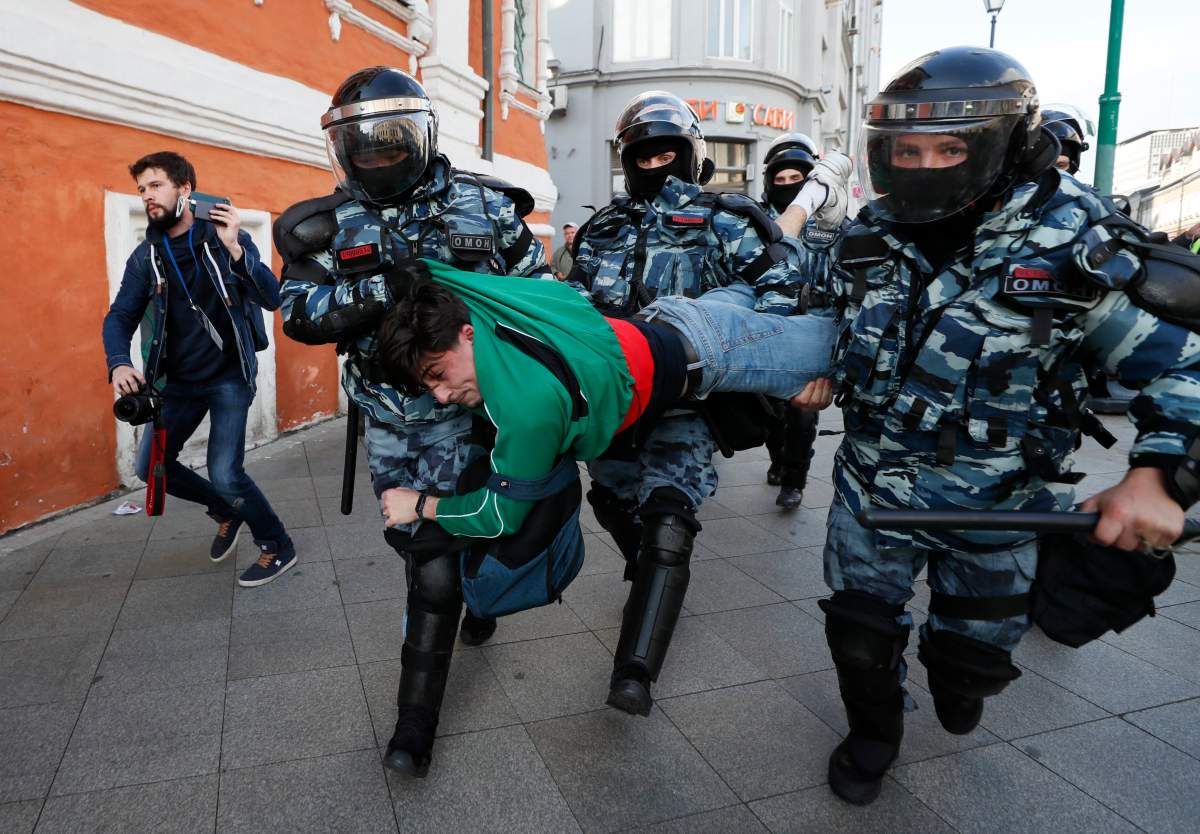It started with a meeting: opposition figure Ilya Yashin and other activists called for one with voters in Moscow, Russia, on July 14, and it soon turned into a march.

A sea of heads crowded outside Moscow City Duma, the capital’s regional parliament, with Russian flags piercing out of the mass of people in the nation’s capital.
Anti-Kremlin activists rallied behind the candidates to condemn a possible ban on opposition candidates like Yashin running in the September Moscow election. The election commission said most of the sponsored candidates did not get enough genuine signatures to be part of it.
This was the first of several ongoing protests, and what started as discontent about a local election in Russia’s capital has since turned into something much bigger.
WATCH: (Aug. 9, 2019) A look back at 20 years of Putin in power

Tens of thousands of people have joined in the protests happening throughout the country, and August saw the biggest political rally Russia has seen in close to a decade. Police crackdowns have escalated and grown more violent — a video showing Russian police punching a 26-year-old woman in the stomach stirred so much anger among Russians that it prompted celebrities like rapper Egor Kreed to share the footage.
Police have arrested those who wanted to run as the opposition.
The roots of these protests are isolated to political issues within Moscow, but the underlying reasons people are out on the streets speak to what’s happening throughout the nation.

Get breaking National news
While President Vladimir Putin’s name and face are on many protesters’ signs at the rallies, the man himself is missing in action. During one July protest, while police detained more than 1,000 people, Putin wasn’t even on land — he was underwater, diving to the bottom of the Gulf of Finland to honour a sunken World War II submarine.
“If he wanted to interfere with the election, he would,” said Fred Weir, a Moscow correspondent for the Christian Science Monitor.
“He hasn’t done that, so clearly he backs the rather draconian methods that Moscow is using.”
Putin has been Russia’s president for nearly 20 years, and this may be why so many young people are protesting — there are people in their 20s and 30s, and some are even teenagers.
“There’s a great deal of Putin fatigue.”
“They’re seeing the most productive years of their life all taking place under one ruler,” he continues, “which they see as just something that shouldn’t happen in a civilized country.”
Political protests like these are a rare sight in Russia, but these protests, and the reason behind them, may have many Russians feeling déjà vu. Between 2011 and 2013, Russians also fought for fair elections, and police clashed with protesters who alleged electoral fraud.
Today, the people of Moscow are again fighting for democracy.
“A segment of the population got angry about being treated like garbage by the ruling bureaucracy of the city,” said Weir. “Even the scraps of democracy they enjoy were kind of snatched from them in a rude sort of a way.”
He continues, “It’s extremely significant because it points to the Achilles heel of the Putin regime, which is that they don’t have democratic legitimacy.”
WATCH: (July 30, 2019) Russia under Putin is an outdated empire: Shevchenko






Comments